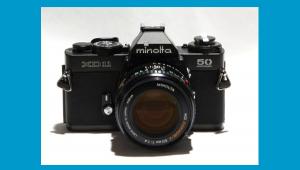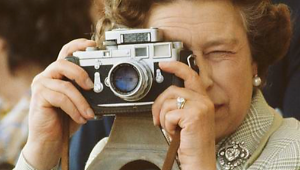How Sophisticated, Simple—Or Both—Is Your Camera?
The problem, of course, is every camera operates in a somewhat different fashion: Menu systems differ, the placement of controls vary, custom settings aren’t always the same, and some lenses even focus in opposite directions. As a result, it can be momentarily confusing when reaching for a camera that you haven’t used in awhile. As a result, I often pack an instruction manual when heading out for an important shoot just in case something unexpected arises.
One way to eliminate—or at least minimize this conundrum—when owning a number of cameras is to choose them wisely. For me, this issue isn’t really about which camera is more or less advanced, but rather which of the models I am considering is the most intuitive in operation. Some folks have the mistaken notions that high-end pro cameras are “too complicated” while medium-format models are likely beyond their comprehension. In fact, the opposite is often the case: Entry-level models are often bloated with a variety of features (like numerous “scene modes” or facial-recognition focus modes, for example) that are of no interest to advanced shooters. As a result, high-end models are frequently more intuitive and easier to use.
So when choosing a new camera, one of my several litmus tests is this: As someone relatively experienced with camera technology, I leave the manual in the box and spend about 30 minutes exploring the features of the camera, running through the basic and advanced menus, custom settings, setup modes, etc.
My view is that a relatively experienced photographer should be able to quickly and easily discern upwards of 85% of everything a camera can do—90% is preferable. If that’s not possible, I usually move on because to me that means the designer fell short of his obligations—either because the menus system is poorly configured with hidden settings, or there are too many different ways to access the same feature or setting. In either case, that slows you down—especially when shooting with a camera you haven used in awhile.
Interestingly, some of the least intuitive cameras I’ve used also have the most poorly written manuals, and that only exacerbates the problem.
Here’s an example: last week I started shooting with a new (and rather unique) camera—The Sigma Quattro DP2. Despite a relatively modest feature set (no Wi-Fi, scene modes, etc.), I expected the Quattro to push the lower end of my “85% Intuitive Scale” simply because this camera looks and operates quite differently from what we are all accustomed to. To my pleasant surprise, it’s perhaps the most intuitive of any highly capable camera I’ve used, and within about 20 minutes (without the manual) I was comfortable with literally 100% of the camera’s capabilities (excluding the rather arcane proprietary Raw software which is a topic for another conversation).
Moreover, after an obligatory reading of the manual to see what I missed (virtually nothing) I was almost equally surprised to find the manual to be superbly written—concise, complete, and well organized.
So my point is his this: Choosing a new camera is an important decision, one you will likely live with for some time. So start with a thorough reading of our comprehensive test reports of the model you are considering. But before you make your purchase—whether you do so on line, over the telephone or at a retail establishment—get your hands on the camera and spend some time running through the operating system to determine if the camera is truly intuitive for you. Borrow one from a friend, visit a camera store, or attend a tradeshow. Play with it, ask questions and then make your decision.
And remember this: some cameras are so sophisticated they’re simple.
















































